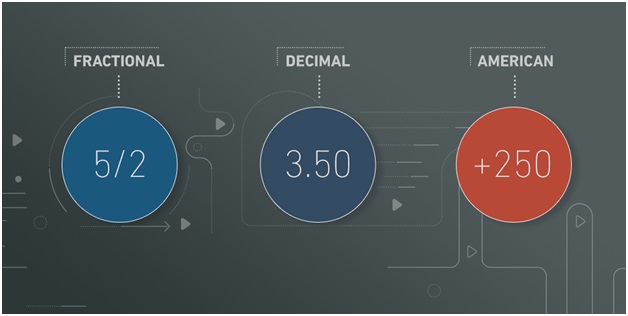Have you ever wondered what fractional betting odds are and how they work? If so, then you’ve come to the right place! This beginner’s guide will explain everything you need to know about fractional betting odds, including the differences between decimal and fractional odds as well as how to calculate potential winnings. With this knowledge in hand, you will be able to confidently place bets and maximize your winnings. So read on to learn more about fractional betting odds!
What Are Fractional Odds?
Put simply, fractional odds are the traditional way of displaying odds in betting. Instead of seeing your chance of winning as a simple percentage or decimal, you can see it represented with a fraction. For example, if we have an event that has 10/1 odds this means that for every £10 stake placed on the bet, you will receive £100 back if it wins.
To illustrate this, let’s look at a concrete example. A horse race has 10 horses in the field and you want to pick one that you think will win the race. After doing some research, you decide to place a £10 bet on the fourth horse with 10/1 odds of winning. If your prediction comes true and the fourth horse wins, you will receive £100 back.
Why Should You Use Fractional Odds?
Fractional odds are one of the most popular and widely used ways of expressing betting odds. One of the biggest advantages is that they can be quickly converted into other formats, such as decimal or moneyline odds. This makes it easier to compare different bets with each other and see which offers a higher potential return on investment.
Another significant advantage of fractional odds is that they can easily be compared to other types of betting. For instance, if you know the decimal equivalent of a bet’s fractional odds (e.g. 1.66 for 5/2), you can quickly determine how likely it is to win or lose based on its payout potential and probability of success.
How Are Fractional Odds Calculated?

How Are Fractional Odds Calculated?
The numerator (the first number) in the fraction represents your potential winnings, while the denominator (the second number) is what you must stake to win that amount. To calculate your total return from a bet with fractional odds, simply multiply the stake and numerator together and add it to the original stake amount.
For example, if you were to bet £5 on 10/3 fractional odds and win, your return would be calculated as follows:
£5 x 10 = £50 + £5 (original stake) = £55 total return.
How Are Fractional Odds Different From Decimal Odds?
Fractional odds are sometimes referred to as British or traditional odds. This is because they have been around for longer and were the standard type of betting odds used in the UK for many years before decimal (or European) odds became more popular.
Unlike fractional odds, decimal odds provide a direct conversion from stake size to potential winnings with no additional math required. They are generally presented in the form of a decimal number, such as 1.50 or 2.50, and represent the total amount that will be returned if the bet is successful (including stake).
For example, bets with odds of 2.50 mean that if you were to stake £5 on a successful wager, your total return would be £12.50 (your original stake plus an additional £7.50).
Pros and Cons of Using Fractional Odds
Fractional odds have a few benefits and drawbacks compared to other types of betting. Here are some pros and cons to consider:
Pros:
- Easy to convert to other formats, like decimal or moneyline odds.
- Quickly compare different bets with each other and see which offers a higher potential return on investment.
- Can easily be compared to other types of betting and determine the probability of success.
Cons:
- May require additional calculations to convert into other formats.
- Difficult for newcomers to understand how they work.
- Not as widely used outside of the UK, making it harder for bettors from other countries to take advantage of offers.

What Are Some Tips for Betting With Fractional Odds?
What Are Some Tips for Betting With Fractional Odds?
- Consider the potential return of each bet before you place it. Fractional odds can make it difficult to quickly determine your expected return, so take the time to calculate it before you place your bet.
- Use fractional odds when the potential winnings are greater than the stake size. This is because you will receive a larger return if you win compared to betting with decimal odds.
- Try not to be swayed by the size of the numerator in the fraction. While a larger numerator might indicate that a selection has better chances of winning, this isn’t always the case. Consider other factors such as recent form and head-to-head history before placing your bet.
What Are Some Common Mistakes to Avoid With Fractional Odds?
- Don’t forget to factor in the stake size when calculating your potential return. Many newcomers make this mistake and end up disappointed when they receive a smaller return than expected.
- Don’t make assumptions about the probability of success based on the size of the numerator in the fraction. While larger numerators are usually associated with better chances of success, this isn’t always the case.
- Avoid placing too much emphasis on short-term trends or statistics. These can be useful for getting a better understanding of the game, but they don’t always accurately predict what will happen in the long run.
Conclusion
Fractional odds are a great way to add an extra level of excitement and challenge to sports betting. While they can be a bit confusing at first, this guide should help you get started with your bets and understand the basics of fractional odds. With VN88 you can easily find the best fractional odds available for any sport or game. Good luck and happy betting!


